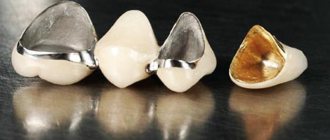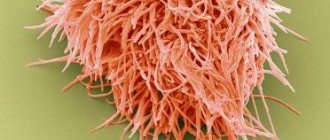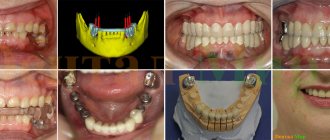The dream of all children when watching their favorite cartoon is to meet the character they see on the screen every day. And it really is possible, it just takes a little effort.
You can call at home:
- gum gnome
- I have a sweet tooth
- mermaid
- tooth fairy
As everyone knows, the tooth fairy is a fairly popular character in children's stories and cartoons. There is a legend that says that the fairy comes at night to visit children who have recently gotten rid of a baby tooth and in return gives a gift: a bag of sweets, a coin or a note with wishes. You can also summon the tooth fairy at home without waiting for her to officially appear. We offer you 4 ways to call a sorceress at home and 2 if you are visiting.
History of the Tooth Fairy
The tooth fairy is a fictional character. Most often it is found in European fairy tales. Also, the image of the tooth fairy is used in a number of modern works and is reflected in films.
There are many versions regarding the appearance and characteristics of the life of this creature. Since the character is fictional, writers often changed him and presented something of their own. By studying various sources, you can understand that there is no consensus.
Most often, the Tooth Fairy is depicted as a middle-aged woman with wings. Outwardly, she is somewhat similar to an elf. The tooth fairy has noble and pleasant facial features, due to which it easily contacts children.
This creature is kind and poses no danger. Of course, there have been other embodiments of the tooth fairy in popular culture. Some writers deliberately made her cunning and evil, hiding negative character traits under the guise of virtue.
A similar literary device has been used by writers for a long time. Agree, it is very original to deliberately make a good character evil and insidious in order to amaze the reader and change his idea of the famous hero.
Where does the tooth fairy live?
It is important to understand that the modern image of the Tooth Fairy was formed relatively recently. It was created by various literary works, films and cartoons in which this character appeared.
It is known that the prototype of the Tooth Fairy existed among the ancient peoples of Europe. They believed in a creature that at night takes baby teeth from children, leaving in return a small gift or coin.
The tooth fairy can be compared to Father Christmas or Santa Claus. Naturally, coins are left under the pillow by parents who want to make their child believe in a beautiful fairy tale. There is nothing wrong with this, because the baby will grow up and understand that his relatives simply wanted to create a happy childhood for him.
Before you call the Tooth Fairy, you need to find out where she lives. According to literary sources, she lives in forests and caves. Every evening she goes hunting for children's teeth, taking with her a bag of coins and gifts.
If you have any questions, please let us know Ask a Question
The fairy lays out the collected incisors in the cave, forming her own logistics. It is believed that this is necessary to quickly find the desired tooth in the future.
Good elemental spirit
Speaking about who can be summoned harmlessly during the day, one cannot fail to mention the spirits of the elements. When summoning a good spirit, you first need to decide who exactly you want to see. These creatures are harmless or neutral, although they have magical powers. Exist:
- Fairies;
- Elemental Spirits;
- Spirits of spaces (houses, apartments, caves, etc.);
- Beregini.
Calling them is not difficult, it is much more difficult to decide what you want to know. It is also necessary to remember that these spirits are sensitive and are easily offended. Therefore, they will make fun of you, worry you and scare you. There are many ways to summon these spirits; we will list the most common ones.
What good spirits can you summon during the day with friends on the street?
Option 1
On the street in a secluded place, the spirits of the elements are called upon; to do this, you need to hold hands and say the spell:
“Spirit of the elements, good, appear. Answer our call for help."
The words are pronounced three times, closing the eyes and clearly imagining the spirit. You will feel something unusual - this will be a sign that the spirit has come. Ask him questions that interest you or ask for help, and after receiving an answer, thank him and let him go.
Option 2
Prepare a silver bell in advance. Sit in a comfortable position, close your eyes and imagine the summoned spirit. Once you are completely relaxed, ring the bell three times and say the words:
“Spirit of the bell, hear the ringing, I’m calling you, come to my aid.”
Then extend your hand with the bell, as soon as the spirit comes, he will ring the bell.
How to summon the tooth fairy?
It is believed that the fairy does not need to be specially summoned. It is enough to prepare the lost tooth for exchange, and she will fly in on her own the next night. The cutter must be left in the access area so that the fairy can freely pick it up and place the gift.
With tooth
How to summon the Tooth Fairy? Many parents remove their front milk teeth on their own, since they have very weak fixation in the gums. During this procedure there is practically no blood or minimal discharge.
If the tooth has a root system, then removal should be done by a specialist. The dentist, using special tools, can easily pull out the primary incisor from the gums. In the future, the tooth is passed on to the parents; you can give it to the child so that he can call the fairy.
First, let's talk about the classic method. The tooth should be placed under the pillow before going to bed. The child needs to read a poem to call the fairy; he can compose it himself.
Now the baby can go to bed. In the morning, the cutter will disappear from under the pillow and a coin will appear. In the USA and Europe it has the denomination of one dollar or euro. In our country, the largest coin at the moment is 10 rubles.
The second option is to put the clove in a glass of water and place the container near the bed. Additionally, the child can read a poem of encouragement before going to bed. It is believed that in the morning there will be a coin next to the glass.
The third way is to put the cutter in a matchbox or in an ashtray. The box must be left open so that the fairy can quickly pick up the tooth and leave a present for the baby.
But what to do if the incisor falls out while walking or hiking? You can wrap it in a scarf and take it with you. But it is also suggested that you immediately hand it over to the tooth fairy. To do this you need:
- Throw the tooth onto the roof of a low building.
- Put it in a hollow in a tree.
The fairy will find the chisel on her own and bring the gift to the child at night. It is important that the tooth remains in the access zone. If it accidentally falls into a roof drain, into a pipe, or gets into the cracks between the roof, then finding it will become problematic.
Without a tooth
It is important to understand that this creature is interested in milk teeth. Therefore, you can attract him only with children's incisors. Without a tooth, the chances of summoning a fairy are close to zero; there is no point for her to waste time visiting your home.
To make an appointment with a doctor
- home
- Symptoms
- Bad breath
- Caries. etiology, stages of development, prevention
Treatment and prevention of caries
Caries is a pathological process in the oral cavity consisting of demineralization followed by destruction of hard tooth tissues and the formation of a defect under the influence of cariogenic microflora. In other words, caries is a process of tooth destruction associated with the erosion of the mineral substances that form the enamel under the influence of microorganisms and the formation of a void. The process of destruction of enamel occurs gradually: bacteria located in the oral cavity, “digesting” food rich in carbohydrates, release a huge amount of organic acids that contribute to the destruction of apatite crystals, a constituent element of enamel. Next, the microbes penetrate into the deeper layers of the tooth, provoking the development of destructive processes.
Causes leading to caries:
- poor nutrition with a predominance of carbohydrate foods
- the presence of microbes due to inadequate oral care
- insufficient content of vitamins, minerals, proteins, fluorine and other microelements in the body
- hereditary factor
- state of the dental system during the period of formation, development and eruption
Caries has several stages of development:
- Spot stage. This stage is characterized by the absence of any sensations on the part of the patient and is detected during a routine examination of the oral cavity.
- Superficial caries. This stage is characterized by the presence of roughness of the tooth surface and short-term pain when exposed to mechanical or temperature stimuli.
- Medium caries is characterized by the formation of a carious cavity.
- Deep caries is characterized by the occurrence of painful sensations when touching the formed carious cavity. Deep caries is a borderline condition of pulpitis.
Caries therapy, depending on the stage of development of this disease, has a number of nuances. Thus, the stain stage requires remineralization - restoration of a sufficient amount of minerals through the use of special solutions. The remaining 3 stages of the disease require treatment of the carious cavity followed by filling it.
Preventive measures to prevent the occurrence of caries include:
- balanced nutrition with its correction towards increasing the consumption of vitamin-mineral complexes and protein foods instead of carbohydrates;
- proper hygienic care of the oral cavity;
- regular (at least once every six months) visits to the dentist.
The relevance of seeking dental services
An oral examination is an important part of an initial visit to the dentist. It is during this procedure that all oral defects, the prevalence and intensity of dental diseases, the effectiveness of treatment of oral diseases (if any), the level of quality of hygiene and the need for therapy are identified, based on the individual characteristics of the body, methods and therapeutic treatment regimens. An initial appointment with a dentist allows you to create an individual program of treatment and preventive measures for each patient, taking into account the characteristics of oral diseases and the patient’s capabilities. Examination is an integral part of diagnosis and a preventive measure for the development of the pathological process. In this regard, it is necessary to make it a rule to visit the dentist once every six months in order to maintain oral health at the proper level.
Theories of caries occurrence
Dental caries is a pathological process associated with demineralization and softening of the hard tissues of the tooth, leading to the formation of a hole in the tooth. Many factors play a huge role in the occurrence of caries. In particular, the development of the disease is influenced by the quantity and quality of saliva, the quality factor of food and drinking water, hereditary factors and the conditions for the formation of enamel.
There are several theories about the occurrence of caries.
- Chemical-parasitic, discovered in 1884 by Miller, which was subsequently laid as the basis for the modern concept. The pathogenesis of the disease in this theory consists of 2 stages, consisting of the gradual destruction of inorganic substances of enamel and dentin under the influence of lactic acid in excess produced as a result of fermentation of carbohydrate food residues with the transition of destructive processes to the organic substances of dentin under the influence of proteolytic enzymes of microorganisms.
- Physico-chemical, discovered in 1928 by Entin, which considers the theory of the occurrence of caries on the basis of the physico-chemical properties of the tooth and saliva. This theory is based on the study of the direction of movement of osmotic currents of 2 media: blood inside the tooth and saliva outside it. This theory makes it possible to actively use in practice methods of exogenous prevention and treatment of caries in the spot stage.
- Biological, discovered in 1948 by Lukomsky, which is based on the importance of endogenous factors affecting tooth development, such as: tooth vitaminization, the ratio of salts Ca, P and F, the amount of ultraviolet radiation. The lack or absence of these factors leads to disruption of mineral and protein metabolism, and, consequently, tooth destruction. The theory did not find experimental confirmation and was declared untenable.
- Proteolysis-chelation, discovered in 1956 by Schatz and Martin. According to this theory, which has many weaknesses (lack of protein breakdown in the stain stage, lack of connection between the localization of caries and the occurrence of the process, and lack of explanation of the frequency of damage to certain parts of the tooth), the susceptibility of enamel to caries damage is explained by the instability of calcium-protein complexes.
- The trophoneurotic theory, discovered by Platonov, which is based on a violation of the nervous regulation of the tooth, has today confirmed its inconsistency by the fact of the normal functioning of a tooth with removed pulp for up to 17 years.
- The modern concept refers to the appearance of caries as a polyetiological disease, which, based on its occurrence, contains a number of reasons: the state of the microflora of the oral cavity, the nature and diet with the percentage of fluoride in food and water, the qualitative and quantitative composition of saliva, the general condition of the body and resistance to extreme influences.
Cariogenic situation in the oral cavity. Factors, clinic
The caries situation in the oral cavity makes the tooth more susceptible to the effects of acids and is characterized by a decrease in the resistance of dental tissues. The cariogenic situation in the oral cavity is caused by a number of local and general reasons.
Common factors include:
- Quality of drinking water and food
- The presence of somatic diseases and changes in the functional state of organs and systems during the formation and maturation of teeth
- Hereditary factor
Local factors include:
- Presence of dental plaque and plaque
- Violation of the qualitative composition of oral fluid
- Presence of food residues in the mouth
- Increased sensitivity of dental tissue associated with deviations in the biochemical composition
- The state of the dental system during the period of formation and eruption of teeth
The cariogenic situation is manifested in the following symptoms:
- Presence of abundant plaque and tartar
- Dental defects such as crowding or malocclusion
- Bleeding gums.
Prevention of a cariogenic situation is ensured by:
- presence of pellicle
- optimal chemical composition of dental tissues, saliva with its mineralizing activity
- quantitative composition of oral fluid
- permeability of tooth enamel
- uniform distribution of chewing load
- cleaning the surface of the teeth with careful oral hygiene, the presence of plaque, tartar
- full maturation of the tooth during its formation and formation.
Mechanism of caries development
Due to the frequent consumption of carbohydrate foods with insufficient oral hygiene, microorganisms have the ability to fix on the pellicle with the formation of dental plaque. Sticky food promotes hardening of this substance in pits, fillings, dentures, fissures, followed by fermentation and rotting. The soft porous structure of dental plaque quickly turns into dental plaque due to the accumulation of end products of microorganisms in it, under which organic acids accumulate in fairly large quantities, affecting the demineralization of the dental area. In addition, dental plaque contains streptococci, which, in turn, contribute to the rapid development of the pathological process.
The formation of dental plaque depends on:
- anatomical structure of the tooth, the structure of its surface
- diet and chewing intensity
- qualitative and quantitative composition of saliva and gingival fluid
- oral hygiene
- the presence of fillings, dentures, dental anomalies.
The formation of dental plaque depends on:
- food composition (eating soft foods and large amounts of sugar accelerates its development)
- salivation and mechanical impact (during sleep, a plaque forms faster than during eating)
Plaque microorganisms produce heteropolysaccharides that have a negative effect on tooth enamel:
Glycans help bacteria adhere to each other and the tooth surface, causing plaque to thicken
levans and dextrans are recognized as sources of a large number of organic acids that cause demineralization processes.
Multiple caries leads to excessive activity of streptococci and lactobacilli with high enzymatic activity of microorganisms, which is a cariogenic situation.
Clinical picture of caries
Classification of caries plays an important role in determining the clinical picture and choosing treatment tactics for the disease.
Caries classification:
- By location: in the spot stage, superficial, medium, deep
- According to anatomical characteristics: caries of enamel, dentin and cementum of the tooth root
- By localization: fissure, cervical, approximal
- Downstream: slow (fast) flowing, stabilized
- According to process activity: compensated, sub(de)compensated.
Initial caries, in other words, the stain stage is characterized by complaints of a sore throat. The tooth does not respond to any other irritants. Demineralization is manifested in the formation of a stain, which is detected during examination by a dentist. Loss of enamel shine, changes in the tooth surface, methylene blue coloring and quenching of luminescence when exposed to ultraviolet light are signs of caries at this stage.
Superficial caries is characterized by pain in response to various types of short-term stimuli. Examination of the tooth reveals a minor defect in the enamel, manifested by the roughness of its surface and the presence of a stain. Superficial caries can be accompanied by inflammation of the periodontal papilla, manifested in swelling, hyperemia and bleeding of the gums. To diagnose superficial caries, in addition to examination, complementary examination methods are recognized: repeated examinations after 3–6 months, translumination, electroodontodiagnostics and x-rays.
Average caries is characterized by pain in response to irritants of any origin, which disappears after the irritating factor is canceled. The integrity of the enamel-dentin junction is disrupted and a small carious cavity is formed, filled with softened dentin. The acute or chronic course of this pathological process is determined by the shape of the cavity, the entrance hole into it and the presence of dentin.
Deep caries is characterized by painful sensations to various irritants. Examination reveals a deep carious cavity with overhanging enamel edges and softened pigmented dentin inside. Diagnostically, deep caries is revealed by pain during probing and percussion (tapping) of the tooth.
What to do if it doesn't work out?
Adults understand that the tooth fairy is a fictional character. It is based on ancient mythology. Writers studied pagan beliefs and created their own creature, which changed over time in popular culture and gradually formed a modern appearance.
The raison d'être of the Tooth Fairy is to compensate for the pain and suffering caused by a lost incisor. With the help of this fairy tale, parents encourage their children to quickly get rid of a tooth that has begun to loosen. Afterwards, the relatives independently take the chisel and put in a coin as compensation, maintaining the child’s faith in this creature.
Naturally, the baby will grow up and realize that the Tooth Fairy does not exist and she is a fairy-tale character. Therefore, there is nothing wrong with making a child believe in this legend.
First, tell your child about this creature. You can introduce him to fairy tales in which the character appears. Then stock up on 10-ruble coins and confirm its existence in practice. The baby will be able to buy candy or chewing gum and will no longer be afraid of having baby teeth removed or visiting the dentist.
Sunny Bunny
Who can be called on the street during the day with friends - for example, a sunny bunny, the spirit of a ray of sunshine that fulfills wishes. Even the youngest wizard can do this. You need to prepare a white sheet of paper and a yellow pencil. You can perform the ceremony either alone or in the company of friends.
Draw a bunny on the paper without lifting the pencil from the sheet. Then place the paper on the window so that the sun's rays fall on it. Wait and let the sheet warm up a little. Then say the cherished words:
“Sunny bunny, come to me. Fulfill my wishes, respond.”
Repeat the text five times, close your eyes tightly and cover the drawing with your palms. Count to fifteen and open your eyes. The sun spirit will sit in your palms. Without lifting your palm from the sheet, ask him for what you want. As soon as you say your will, open your palms and release the sunbeam. Soon your wish will come true.
How to diversify a tradition
1.
Instead of a regular banknote, give your child a “magic” money - strewn with shining sparkles.
2.
The presence of a fairy can be confirmed by her accidentally leaving behind a magic wand.
3.
Take a photo of your baby in his sleep, draw the Tooth Fairy in a graphics editor, and show your baby the processed picture.
4.
Glitter can also be used as traces left by the sorceress.
5.
Feedback from the fairy can also be maintained in writing. The baby can write her a letter about what he would like to find under the pillow, and in return receive gratitude for the careful care of his teeth and the desired present.
How to pull out a child's tooth?
It is better to remove a tooth in a well-lit room. Before the procedure, encourage your child to brush their teeth and rinse their mouth with the solution. You can pull out a tooth using a thread: tie it around the crown part and sharply pull it upward if the tooth is lower, and vice versa downward if the tooth is upper.
Interesting materials:
Where is hypertext technology used? Where is a voltage transformer used? Where is trigonometry used in real life? Where is coal from the Pechora coal basin used? Where is the grapevine knot used? Where is Spindle Oil used? Where is water transport used? Where are octal and hexadecimal number systems used? Where are was and were used? Where is filigree used?
Ritual to call a fairy, with a candle
To conduct a ritual for beginners, you need to buy in advance:
The ritual should be carried out during the full moon, at 12 noon. You need to sit down at a completely clean table and place a small bowl of water in the center, and around (at an even distance from each other) candles, nearby you need to put a delicious sweet (a reward for the fairy for her work).
Then the window to the room is opened slightly (so that the creature can enter the room), after which, lowering your head into a container of water, you need to exclaim three times:
“Fairy of desires, I conjure, hear my call! Come and make your wish come true!”
As soon as the person performing the ceremony hears a distant bell ringing and ripples appear on the surface of the water, it means the fairy agrees to fulfill the person’s wish.
If after the ceremony there is silence around, it means the magical creature does not want to make contact.
But if the fairy still decides to fulfill a wish, it is worth remembering that she can only fulfill 1 wish at a time. And the caller should not abuse her kindness and call her more than once a month.
It is necessary to clearly formulate your wish and not try to make something that no one can fulfill (magic power, elixir of eternal life, etc.).
Gnome of wishes
Who can you call at home during the day - the wish gnome will help you make your dreams come true. You need to prepare a gift for the gnome; it could be something shiny or sweet. Sit at the table, light a candle in front of you and call the gnome, looking at the fire:
“Gnome of wishes, I call you, accept the gift, fulfill my wish.”
If the entity appears, you will feel the presence of someone behind your back. Without turning around, say your wish. If you feel warm, your wish will come true, but if the candle goes out, don’t wait for help. Don’t rush, start small, and you will definitely succeed, the main thing is to believe.











